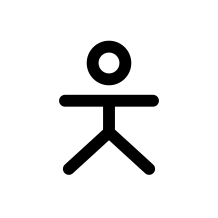Day 10: Hoof It
Megathread guidelines
- Keep top level comments as only solutions, if you want to say something other than a solution put it in a new post. (replies to comments can be whatever)
- You can send code in code blocks by using three backticks, the code, and then three backticks or use something such as https://topaz.github.io/paste/ if you prefer sending it through a URL
FAQ
- What is this?: Here is a post with a large amount of details: https://programming.dev/post/6637268
- Where do I participate?: https://adventofcode.com/
- Is there a leaderboard for the community?: We have a programming.dev leaderboard with the info on how to join in this post: https://programming.dev/post/6631465
Julia
Quite happy that today went a lot smoother than yesterday even though I am not really familiar with recursion. Normally I never use recursion but I felt like today could be solved by it (or using trees, but I’m even less familiar with them). Surprisingly my solution actually worked and for part 2 only small modifications were needed to count peaks reached by each trail.
Code
function readInput(inputFile::String) f = open(inputFile,"r") lines::Vector{String} = readlines(f) close(f) topoMap = Matrix{Int}(undef,length(lines),length(lines[1])) for (i,l) in enumerate(lines) topoMap[i,:] = map(x->parse(Int,x),collect(l)) end return topoMap end function getTrailheads(topoMap::Matrix{Int}) trailheads::Vector{Vector{Int}} = [] for (i,r) in enumerate(eachrow(topoMap)) for (j,c) in enumerate(r) c==0 ? push!(trailheads,[i,j]) : nothing end end return trailheads end function getReachablePeaks(topoMap::Matrix{Int},trailheads::Vector{Vector{Int}}) reachablePeaks = Dict{Int,Vector{Vector{Int}}}() function getPossibleMoves(topoMap::Matrix{Int},pos::Vector{Int}) possibleMoves::Vector{Vector{Int}} = [] pos[1]-1 in 1:size(topoMap)[1] && topoMap[pos[1]-1,pos[2]]==topoMap[pos[1],pos[2]]+1 ? push!(possibleMoves,[pos[1]-1,pos[2]]) : nothing #up? pos[1]+1 in 1:size(topoMap)[1] && topoMap[pos[1]+1,pos[2]]==topoMap[pos[1],pos[2]]+1 ? push!(possibleMoves,[pos[1]+1,pos[2]]) : nothing #down? pos[2]-1 in 1:size(topoMap)[2] && topoMap[pos[1],pos[2]-1]==topoMap[pos[1],pos[2]]+1 ? push!(possibleMoves,[pos[1],pos[2]-1]) : nothing #left? pos[2]+1 in 1:size(topoMap)[2] && topoMap[pos[1],pos[2]+1]==topoMap[pos[1],pos[2]]+1 ? push!(possibleMoves,[pos[1],pos[2]+1]) : nothing #right? return possibleMoves end function walkPossMoves(topoMap::Matrix{Int},pos::Vector{Int},reachedPeaks::Matrix{Bool},trailId::Int) possMoves::Vector{Vector{Int}} = getPossibleMoves(topoMap,pos) for m in possMoves if topoMap[m[1],m[2]]==9 reachedPeaks[m[1],m[2]]=1 trailId += 1 continue end reachedPeaks,trailId = walkPossMoves(topoMap,m,reachedPeaks,trailId) end return reachedPeaks, trailId end peaksScore::Int = 0; trailsScore::Int = 0 trailId::Int = 0 for (i,t) in enumerate(trailheads) if !haskey(reachablePeaks,i); reachablePeaks[i]=[]; end reachedPeaks::Matrix{Bool} = zeros(size(topoMap)) trailId = 0 reachedPeaks,trailId = walkPossMoves(topoMap,t,reachedPeaks,trailId) trailPeaksScore = sum(reachedPeaks) peaksScore += trailPeaksScore trailsScore += trailId end return peaksScore,trailsScore end #getReachablePeaks topoMap::Matrix{Int} = readInput("input/day10Input") trailheads::Vector{Vector{Int}} = getTrailheads(topoMap) @info "Part 1" reachablePeaks = getReachablePeaks(topoMap,trailheads)[1] println("reachable peaks: ",reachablePeaks) @info "Part 2" trailsScore::Int = getReachablePeaks(topoMap,trailheads)[2] println("trails score: $trailsScore")Python
Sets of tuples and iteration for both first and second parts. A list of tuples used as a stack for the conversion of recursion to iteration. Dictionary of legal trail moves for traversal. Type hints for antibugging in VSCode. Couple of seconds runtime for each part.
https://github.com/jdnewmil/aocpy/blob/master/aocpy%2Faoc2024%2Fday10.py
are type hints only for debugging? I never really used them.
your code was interesting, where do you think your script was taking longer than usual to solve? Does VSCode help with this?
my python script only takes 1.5 milliseconds to solve both parts.
Not “debugging” … the value comes before I even try to run the code. The background syntax checker highlights when the types don’t agree into and out of each function call and I don’t get errors like trying to index into an integer.
As for time… I guessed… I did not measure. I have limited time to play with this and don’t optimize unless I find myself waiting excessively for an answer.
Raku
Pretty straight-forward problem today.
sub MAIN($input) { my $file = open $input; my @map = $file.slurp.trim.lines>>.comb>>.Int; my @pos-tracking = [] xx 10; for 0..^@map.elems X 0..^@map[0].elems -> ($row, $col) { @pos-tracking[@map[$row][$col]].push(($row, $col).List); } my %on-possible-trail is default([]); my %trail-score-part2 is default(0); for 0..^@pos-tracking.elems -> $height { for @pos-tracking[$height].List -> ($row, $col) { if $height == 0 { %on-possible-trail{"$row;$col"} = set ("$row;$col",); %trail-score-part2{"$row;$col"} = 1; } else { for ((1,0), (-1, 0), (0, 1), (0, -1)) -> @neighbor-direction { my @neighbor-position = ($row, $col) Z+ @neighbor-direction; next if @neighbor-position.any < 0 or (@neighbor-position Z>= (@map.elems, @map[0].elems)).any; next if @map[@neighbor-position[0]][@neighbor-position[1]] != $height - 1; %on-possible-trail{"$row;$col"} ∪= %on-possible-trail{"{@neighbor-position[0]};{@neighbor-position[1]}"}; %trail-score-part2{"$row;$col"} += %trail-score-part2{"{@neighbor-position[0]};{@neighbor-position[1]}"}; } } } } my $part1-solution = @pos-tracking[9].map({%on-possible-trail{"{$_[0]};{$_[1]}"}.elems}).sum; say "part 1: $part1-solution"; my $part2-solution = @pos-tracking[9].map({%trail-score-part2{"{$_[0]};{$_[1]}"}}).sum; say "part 2: $part2-solution"; }straight-forward
Maybe for you 😅
C#
using QuickGraph; using QuickGraph.Algorithms.Search; using Point = (int, int); public class Day10 : Solver { private int[][] data; private int width, height; private List<int> destinations_counts = [], paths_counts = []; private record PointEdge(Point Source, Point Target): IEdge<Point>; private DelegateVertexAndEdgeListGraph<Point, PointEdge> MakeGraph() => new(AllPoints(), GetNeighbours); private static readonly List<Point> directions = [(1, 0), (-1, 0), (0, 1), (0, -1)]; private bool GetNeighbours(Point from, out IEnumerable<PointEdge> result) { List<PointEdge> neighbours = []; int next_value = data[from.Item2][from.Item1] + 1; foreach (var (dx, dy) in directions) { int x = from.Item1 + dx, y = from.Item2 + dy; if (x < 0 || y < 0 || x >= width || y >= height) continue; if (data[y][x] != next_value) continue; neighbours.Add(new(from, (x, y))); } result = neighbours; return true; } private IEnumerable<Point> AllPoints() => Enumerable.Range(0, width).SelectMany(x => Enumerable.Range(0, height).Select(y => (x, y))); public void Presolve(string input) { data = input.Trim().Split("\n").Select(s => s.Select(ch => ch - '0').ToArray()).ToArray(); width = data[0].Length; height = data.Length; var graph = MakeGraph(); for (int i = 0; i < width; i++) { for (int j = 0; j < height; j++) { if (data[j][i] != 0) continue; var search = new BreadthFirstSearchAlgorithm<Point, PointEdge>(graph); Point start = (i, j); Dictionary<Point, int> paths_into = []; paths_into[start] = 1; var destinations = 0; var paths = 0; search.ExamineEdge += edge => { paths_into.TryAdd(edge.Target, 0); paths_into[edge.Target] += paths_into[edge.Source]; }; search.FinishVertex += vertex => { if (data[vertex.Item2][vertex.Item1] == 9) { paths += paths_into[vertex]; destinations += 1; } }; search.SetRootVertex(start); search.Compute(); destinations_counts.Add(destinations); paths_counts.Add(paths); } } } public string SolveFirst() => destinations_counts.Sum().ToString(); public string SolveSecond() => paths_counts.Sum().ToString(); }Nim
As many others today, I’ve solved part 2 first and then fixed a ‘bug’ to solve part 1. =)
type Vec2 = tuple[x,y:int] const Adjacent = [(x:1,y:0),(-1,0),(0,1),(0,-1)] proc path(start: Vec2, grid: seq[string]): tuple[ends, trails: int] = var queue = @[@[start]] var endNodes: HashSet[Vec2] while queue.len > 0: let path = queue.pop() let head = path[^1] let c = grid[head.y][head.x] if c == '9': inc result.trails endNodes.incl head continue for d in Adjacent: let nd = (x:head.x + d.x, y:head.y + d.y) if nd.x < 0 or nd.y < 0 or nd.x > grid[0].high or nd.y > grid.high: continue if grid[nd.y][nd.x].ord - c.ord != 1: continue queue.add path & nd result.ends = endNodes.len proc solve(input: string): AOCSolution[int, int] = let grid = input.splitLines() var trailstarts: seq[Vec2] for y, line in grid: for x, c in line: if c == '0': trailstarts.add (x,y) for start in trailstarts: let (ends, trails) = start.path(grid) result.part1 += ends result.part2 += trails
Python
Not surprisingly, trees
import numpy as np from pathlib import Path cwd = Path(__file__).parent cross = np.array([[-1,0],[1,0],[0,-1],[0,1]]) class Node(): def __init__(self, coord, parent): self.coord = coord self.parent = parent def __repr__(self): return f"{self.coord}" def parse_input(file_path): with file_path.open("r") as fp: data = list(map(list, fp.read().splitlines())) return np.array(data, dtype=int) def find_neighbours(node_pos, grid): I = list(filter(lambda x: all([c>=0 and o-c>0 for c,o in zip(x,grid.shape)]), list(cross + node_pos))) candidates = grid[tuple(np.array(I).T)] J = np.argwhere(candidates-grid[tuple(node_pos)]==1).flatten() return list(np.array(I).T[:, J].T) def construct_tree_paths(grid): roots = list(np.argwhere(grid==0)) trees = [] for root in roots: levels = [[Node(root, None)]] while len(levels[-1])>0 or len(levels)==1: levels.append([Node(node, root) for root in levels[-1] for node in find_neighbours(root.coord, grid)]) trees.append(levels) return trees def trace_back(trees, grid): paths = [] for levels in trees: for node in levels[-2]: path = "" while node is not None: coord = ",".join(node.coord.astype(str)) path += f"{coord} " node = node.parent paths.append(path) return paths def solve_problem(file_name): grid = parse_input(Path(cwd, file_name)) trees = construct_tree_paths(grid) trails = trace_back(trees, grid) ntrails = len(set(trails)) nreached = sum([len(set([tuple(x.coord) for x in levels[-2]])) for levels in trees]) return nreached, ntrailsyay trees! my solution was really fast too! 😀
edit: you can find it here, or look at my lemmy post
should take only 1.5 milliseconds!
Haskell
import Control.Arrow import Control.Monad.Reader import Data.Array.Unboxed import Data.List type Pos = (Int, Int) type Board = UArray Pos Char type Prob = Reader Board parse :: String -> Board parse s = listArray ((1, 1), (n, m)) $ concat l where l = lines s n = length l m = length $ head l origins :: Prob [Pos] origins = ask >>= \board -> return $ fmap fst . filter ((== '0') . snd) $ assocs board moves :: Pos -> Prob [Pos] moves pos = ask >>= \board -> let curr = board ! pos in return . filter ((== succ curr) . (board !)) . filter (inRange (bounds board)) $ fmap (.+. pos) deltas where deltas = [(1, 0), (0, 1), (-1, 0), (0, -1)] (ax, ay) .+. (bx, by) = (ax + bx, ay + by) solve :: [Pos] -> Prob [Pos] solve p = do board <- ask nxt <- concat <$> mapM moves p let (nines, rest) = partition ((== '9') . (board !)) nxt fmap (++ nines) $ if null rest then return [] else solve rest scoreTrail = fmap (length . nub) . solve . pure scoreTrail' = fmap length . solve . pure part1 = sum . runReader (origins >>= mapM scoreTrail) part2 = sum . runReader (origins >>= mapM scoreTrail') main = getContents >>= print . (part1 &&& part2) . parseTypeScript
Maaaannnn. Today’s solution was really something. I actually got so confused initially that I unknowingly wrote the algorithm for part 2 before I even finished part 1! As an upside, however, I did expand my own Advent of Code standard library ;)
Solution
import { AdventOfCodeSolutionFunction } from "./solutions"; import { Grid } from "./utils/grids"; import { LinkedPoint } from "./utils/structures/linkedPoint"; import { makeGridFromMultilineString, SumArray } from "./utils/utils"; class TrailPoint extends LinkedPoint<number, TrailPoint> { constructor(x: number, y: number, item: number, grid: Grid<TrailPoint>) { super(x, y, item, grid); } lookAroundValid(): Array<TrailPoint> { return this.lookAround().filter(v => v.item == this.item + 1); } findAllValidPeaks(): Array<TrailPoint> { if (this.item == 9) return [this]; // filter for distinct references (this theoretically saves time) return [...(new Set(this.lookAroundValid().flatMap(v => v.findAllValidPeaks())))]; } findAllValidPeaksWithReps(): Array<TrailPoint> { if (this.item == 9) return [this]; // don't filter return this.lookAroundValid().flatMap(v => v.findAllValidPeaksWithReps()); } } export const solution_10: AdventOfCodeSolutionFunction = (input) => { const map: Grid<TrailPoint> = makeGridFromMultilineString(input) .map((row) => row.map((item) => item != "." ? Number(item) : -1)) .map((row, y) => row.map((item, x) => new TrailPoint(x, y, item, undefined!))); map.flat().forEach((v) => v.grid = map); // promise is a promise const startNodes: Array<TrailPoint> = map.flat().filter(v => v.item == 0); const part_1 = SumArray(startNodes.map(v => v.findAllValidPeaks().length)); const part_2 = SumArray(startNodes.map(v => v.findAllValidPeaksWithReps().length)); return { part_1, // 557 part_2, // 1062 } }C#
using System.Diagnostics; using Common; namespace Day10; static class Program { static void Main() { var start = Stopwatch.GetTimestamp(); var sampleInput = Input.ParseInput("sample.txt"); var programInput = Input.ParseInput("input.txt"); Console.WriteLine($"Part 1 sample: {Part1(sampleInput)}"); Console.WriteLine($"Part 1 input: {Part1(programInput)}"); Console.WriteLine($"Part 2 sample: {Part2(sampleInput)}"); Console.WriteLine($"Part 2 input: {Part2(programInput)}"); Console.WriteLine($"That took about {Stopwatch.GetElapsedTime(start)}"); } static object Part1(Input i) => GetTrailheads(i) .Sum(th => CountTheNines(th, i, new HashSet<Point>(), false)); static object Part2(Input i) => GetTrailheads(i) .Sum(th => CountTheNines(th, i, new HashSet<Point>(), true)); static int CountTheNines(Point loc, Input i, ISet<Point> visited, bool allPaths) { if (!visited.Add(loc)) return 0; var result = (ElevationAt(loc, i) == 9) ? 1 : loc.GetCardinalMoves() .Where(move => move.IsInBounds(i.Bounds.Row, i.Bounds.Col)) .Where(move => (ElevationAt(move, i) - ElevationAt(loc, i)) == 1) .Where(move => !visited.Contains(move)) .Sum(move => CountTheNines(move, i, visited, allPaths)); if(allPaths) visited.Remove(loc); return result; } static IEnumerable<Point> GetTrailheads(Input i) => Grid.EnumerateAllPoints(i.Bounds) .Where(loc => ElevationAt(loc, i) == 0); static int ElevationAt(Point p, Input i) => i.Map[p.Row][p.Col]; } public class Input { public required Point Bounds { get; init; } public required int[][] Map { get; init; } public static Input ParseInput(string file) { using var reader = new StreamReader(file); var map = reader.EnumerateLines() .Select(l => l.Select(c => (int)(c - '0')).ToArray()) .ToArray(); var bounds = new Point(map.Length, map.Max(l => l.Length)); return new Input() { Map = map, Bounds = bounds, }; } }Straightforward depth first search. I found that the only difference for part 2 was to remove the current location from the HashSet of visited locations when the recurive call finished so that it could be visited again in other unique paths.
J
Who needs recursion or search algorithms? Over here in line noise array hell, we have built-in sparse matrices! :)
data_file_name =: '10.data' grid =: "."0 ,. > cutopen fread data_file_name data =: , grid 'rsize csize' =: $ grid inbounds =: monad : '(*/ y >: 0 0) * (*/ y < rsize, csize)' coords =: ($ grid) & #: uncoords =: ($ grid) & #. NB. if n is the linear index of a point, neighbors n lists the linear indices NB. of its orthogonally adjacent points neighbors =: monad : 'uncoords (#~ inbounds"1) (coords y) +"1 (4 2 $ 1 0 0 1 _1 0 0 _1)' uphill1 =: dyad : '1 = (y { data) - (x { data)' uphill_neighbors =: monad : 'y ,. (#~ (y & uphill1)) neighbors y' adjacency_of =: monad define edges =. ; (< @: uphill_neighbors"0) i.#y NB. must explicitly specify fill of integer 0, default is float 1 edges} 1 $. ((#y), #y); (0 1); 0 ) adjacency =: adjacency_of data NB. maximum path length is 9 so take 9th power of adjacency matrix leads_to_matrix =: adjacency (+/ . *)^:8 adjacency leads_to =: dyad : '({ & leads_to_matrix) @: < x, y' trailheads =: I. data = 0 summits =: I. data = 9 scores =: trailheads leads_to"0/ summits result1 =: +/, 0 < scores result2 =: +/, scoresFor some reason the code appears to be HTML escaped (I’m using the web interface on https://lemmy.sdf.org)
Yes. I don’t know whether this is a beehaw specific issue (that being my home instance) or a lemmy issue in general, but < and & are HTML escaped in all code blocks I see. Of course, this is substantially more painful for J code than many other languages.
C
Tried a dynamic programming kind of thing first but recursion suited the problem much better.
Part 2 seemed incompatible with my visited list representation. Then at the office I suddenly realised I just had to skip a single if(). Funny how that works when you let things brew in the back of your mind.
Code
#include "common.h" #define GZ 43 /* * To avoid having to clear the 'seen' array after every search we mark * and check it with a per-search marker value ('id'). */ static char g[GZ][GZ]; static int seen[GZ][GZ]; static int score(int id, int x, int y, int p2) { if (x<0 || x>=GZ || y<0 || y>=GZ || (!p2 && seen[y][x] == id)) return 0; seen[y][x] = id; if (g[y][x] == '9') return 1; return (g[y-1][x] == g[y][x]+1 ? score(id, x, y-1, p2) : 0) + (g[y+1][x] == g[y][x]+1 ? score(id, x, y+1, p2) : 0) + (g[y][x-1] == g[y][x]+1 ? score(id, x-1, y, p2) : 0) + (g[y][x+1] == g[y][x]+1 ? score(id, x+1, y, p2) : 0); } int main(int argc, char **argv) { int p1=0,p2=0, id=1, x,y; if (argc > 1) DISCARD(freopen(argv[1], "r", stdin)); for (y=0; y<GZ && fgets(g[y], GZ, stdin); y++) ; for (y=0; y<GZ; y++) for (x=0; x<GZ; x++) if (g[y][x] == '0') { p1 += score(id++, x, y, 0); p2 += score(id++, x, y, 1); } printf("10: %d %d\n", p1, p2); return 0; }That’s a lovely minimalist solution. I couldn’t even see where the solution was on my first read-through.
I bet that search would look cool visualized.
Here it is! https://sjmulder.nl/2024/aoc-day10.mp4
Oooh! Pretty!
Uiua
Uiua has a very helpful
pathfunction built in which returns all valid paths that match your criteria (using diijkstra/a* depending on whether third function is provided), making a lot of path-finding stuff almost painfully simple, as you just need to provide a starting node and three functions: return next nodes, return confirmation if we’ve reached a suitable target node (here testing if it’s = 9), (optional) return heuristic cost to destination (here set to constant 1), .Data ← ⊜≡⋕⊸≠@\n"89010123\n78121874\n87430965\n96549874\n45678903\n32019012\n01329801\n10456732" N₄ ← ≡+[0_1 1_0 0_¯1 ¯1_0]¤ Ns ← ▽:⟜(=1-:∩(⬚0⊡:Data))▽⊸≡(/×≥0)N₄. # Valid, in-bounds neighbours. Count! ← /+≡(⧻^0⊙◌ path(Ns|(=9⊡:Data)|1))⊚=0Data &p Count!(◴≡◇⊣) &p Count!∘Dart
I dug out the hill-climbing trail-walking code from 2022 Day 12, put it up on blocks, and stripped all the weirdness out of it.
Ended up with just a simple flood-fill from each trailhead, so it turns out I only actually used the Graph and Node classes which I then also stripped out…
import 'dart:math'; import 'package:collection/collection.dart'; import 'package:more/more.dart'; late Map<Point, int> nodes; late Map<Point, List> nexts; /// Parse the lines, build up nodes and nexts, return starts. List<Point> parse(ls) { nodes = { for (var y in 0.to(ls.length)) for (var x in 0.to(ls.first.length)) Point(x, y): int.parse(ls[y][x]) }; nexts = Map.fromEntries(nodes.keys.map((n) => MapEntry( n, [Point(0, 1), Point(0, -1), Point(1, 0), Point(-1, 0)] .map((d) => n + d) .where((d) => (nodes[d] ?? -1) - nodes[n]! == 1) .toList()))); return nodes.keys.where((e) => nodes[e] == 0).toList(); } /// Given a starting node, return all valid paths to any '9' on the grid. Set paths(Point here, [Set sofar = const {}]) { if (nodes[here]! == 9) return {sofar}; return nexts[here]! .where((e) => !sofar.contains(e)) .fold({}, (s, f) => s..addAll(paths(f, sofar.toSet()..add(f)))); } /// Finds all paths from each start, then apply the fn to each and sum. count(lines, int Function(Set) fn) => parse(lines).map(paths).map<int>(fn).sum; part1(lines) => count(lines, (e) => e.map((p) => p.last).toSet().length); part2(lines) => count(lines, (e) => e.length);Uiua
After finally deciding to put aside Day 9 Part 2 for now, this was really easy actually. The longest was figuring out how many extra dimensions I had to give some arrays and where to remove those again (and how). Then part 2 came along and all I had to do was remove a single character (not removing duplicates when landing on the same field by going different ways from the same starting point). Basically, everything in the parentheses of the
Trails!macro was my solution for part 1, just that the^0was◴(deduplicate). Once that was removed, the solution for part 2 was there as well.Run with example input here
Note: in order to use the code here for the actual input, you have to replace
=₈with=₅₀because I was too lazy to make it work with variable array sizes this time.$ 89010123 $ 78121874 $ 87430965 $ 96549874 $ 45678903 $ 32019012 $ 01329801 $ 10456732 . Adj ← ¤[0_¯1 0_1 ¯1_0 1_0] Trails! ← ( ⊚=0. ⊙¤ ≡(□¤) 1 ⍥(⊙(≡(□^0/⊂≡(+¤)⊙¤°□)⊙Adj ≡(□▽¬≡/++⊃=₋₁=₈.°□)) +1⟜⊸⍚(▽=⊙(:⟜⊡)) )9 ⊙◌◌ ⧻/◇⊂ ) PartOne ← ( # &rs ∞ &fo "input-10.txt" ⊜∵⋕≠@\n. Trails!◴ ) PartTwo ← ( # &rs ∞ &fo "input-10.txt" ⊜∵⋕≠@\n. Trails!∘ ) &p "Day 10:" &pf "Part 1: " &p PartOne &pf "Part 2: " &p PartTwoKotlin
- Clean ❌
- Fast ❌
- Worked first try ✅
Code:
fun main() { /** * The idea is simple: Just simulate the pathing and sum all the end points */ fun part1(input: List<String>): Int { val topologicalMap = Day10Map(input) val startingPoints = topologicalMap.asIterable().indicesWhere { it == 0 } val directions = Orientation.entries.map { it.asVector() } return startingPoints.sumOf { startingPoint -> var wayPoints = setOf(VecNReal(startingPoint)) val endPoints = mutableSetOf<VecNReal>() while (wayPoints.isNotEmpty()) { wayPoints = wayPoints.flatMap { wayPoint -> directions.map { direction -> val checkoutLocation = wayPoint + direction checkoutLocation to runCatching { topologicalMap[checkoutLocation] }.getOrElse { -1 } }.filter { nextLocation -> val endPointHeight = topologicalMap[wayPoint] if (nextLocation.second - 1 == endPointHeight && nextLocation.second == 9) false.also { endPoints.add(nextLocation.first) } else if (nextLocation.second - 1 == endPointHeight) true else false }.map { it.first } }.toSet() } endPoints.count() } } /** * A bit more complicated, but not by much. * Main difference is, that node accumulates all the possible paths, thus adding all the possibilities of * its parent node. */ fun part2(input: List<String>): Int { val topologicalMap = Day10Map(input) val startingPoints = topologicalMap.asIterable().indicesWhere { it == 0 } val directions = Orientation.entries.map { it.asVector() } return startingPoints.sumOf { startingPoint -> var pathNodes = setOf<Node>(Node(VecNReal(startingPoint), topologicalMap[VecNReal(startingPoint)], 1)) val endNodes = mutableSetOf<Node>() while (pathNodes.isNotEmpty()) { pathNodes = pathNodes.flatMap { pathNode -> directions.map { direction -> val nextNodeLocation = pathNode.position + direction val nextNodeHeight = runCatching { topologicalMap[nextNodeLocation] }.getOrElse { -1 } Node(nextNodeLocation, nextNodeHeight, pathNode.weight) }.filter { nextNode -> nextNode.height == pathNode.height + 1 } }.groupBy { it.position }.map { (position, nodesUnadjusted) -> val adjustedWeight = nodesUnadjusted.sumOf { node -> node.weight } Node(position, nodesUnadjusted.first().height, adjustedWeight) }.filter { node -> if (node.height == 9) false.also { endNodes.add(node) } else true }.toSet() } endNodes.sumOf { endNode -> endNode.weight } } } val testInput = readInput("Day10_test") check(part1(testInput) == 36) check(part2(testInput) == 81) val input = readInput("Day10") part1(input).println() part2(input).println() } class Day10Map(input: List<String>): Grid2D<Int>(input.map { row -> row.map { "$it".toInt() } }) { init { transpose() } } data class Node(val position: VecNReal, val height: Int, val weight: Int = 1)








